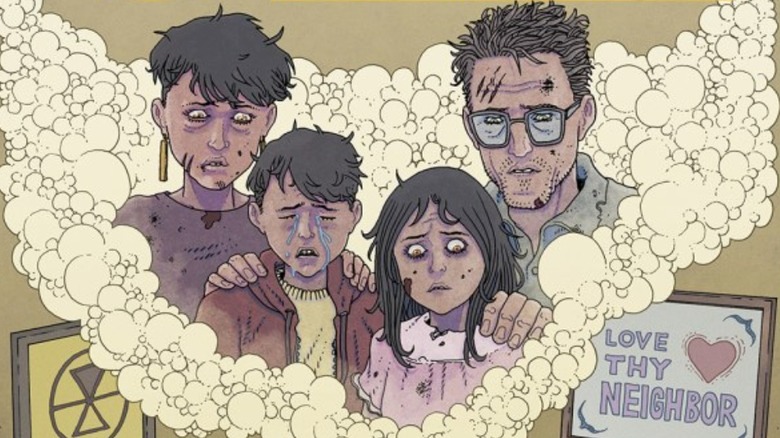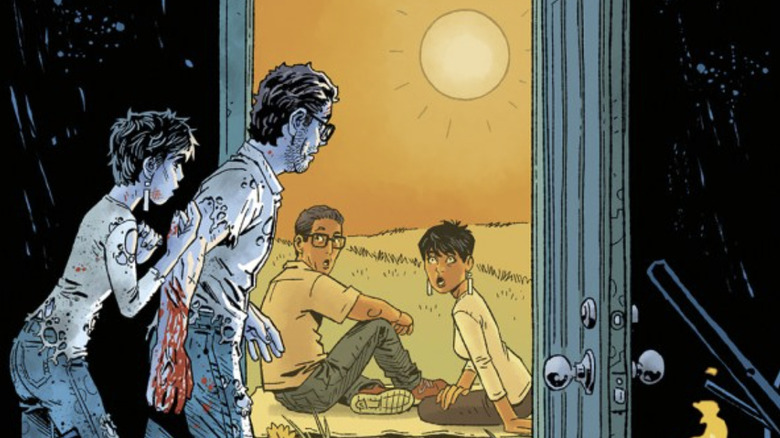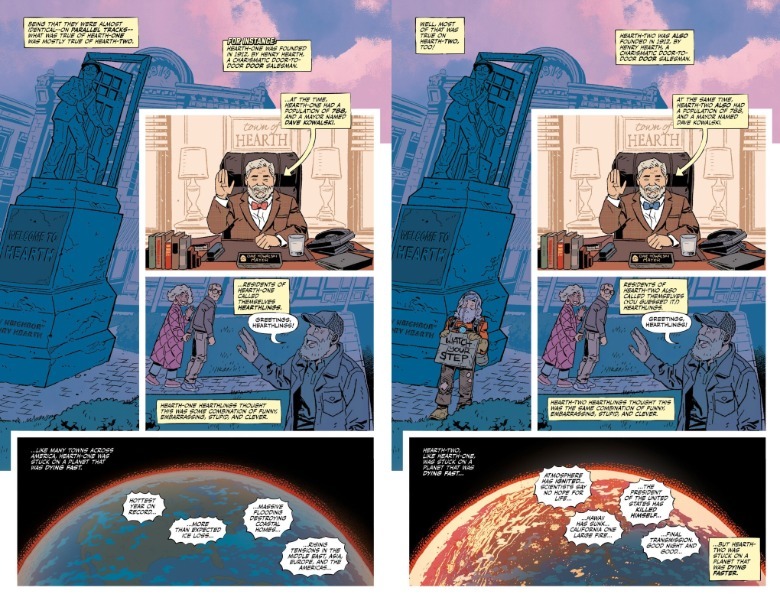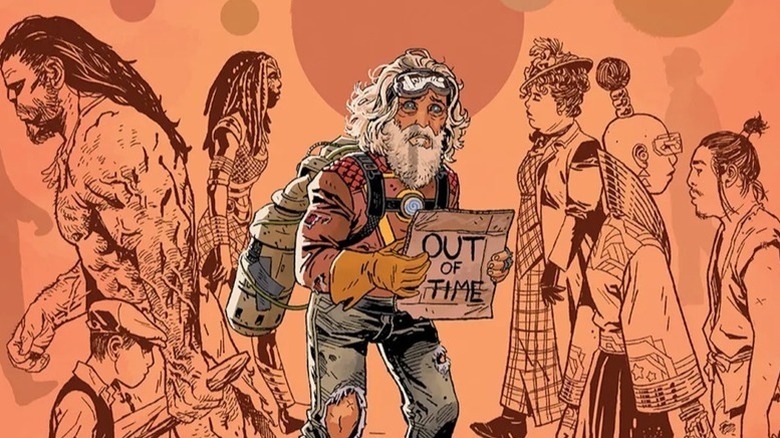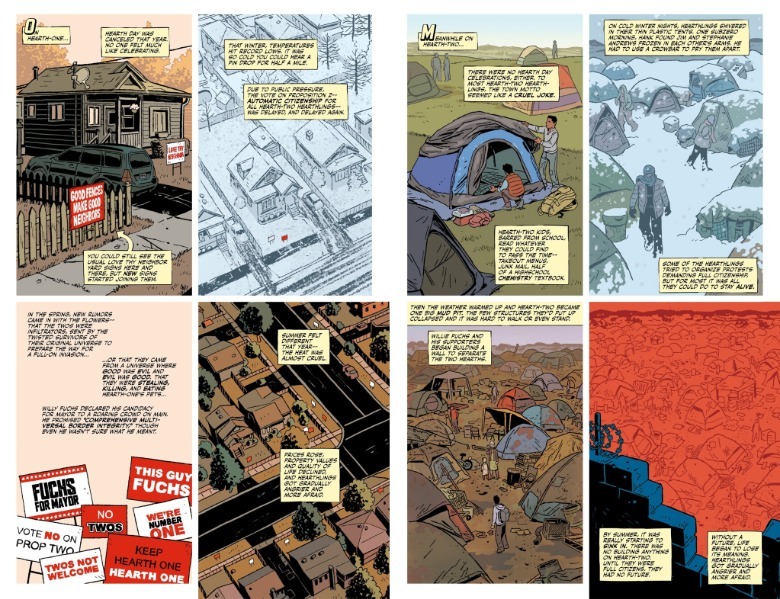The Most Relevant Sci-Fi Story Of 2025 Is This New Comic Book
We may receive a commission on purchases made from links.
Superhero movies have become infatuated with the multiverse. A lot of that must go back to Marv Wolfman and George Pérez's 1986 "Crisis on Infinite Earths," where all the heroes from DC Comics' vast multiverse band together against an omnicidal threat. But can the multiverse be used for greater storytelling than as a vehicle to throw blockbuster IP together? The new comic book "Assorted Crisis Events" says "Yes."
Since the first issue of "Assorted Crisis Events" (which I covered here), the series has been sold as "'Crisis On Infinite Earths' if it was happening to normal people." Written by Deniz Camp, penciled by Eric Zawadzki, and colored by Jordie Bellaire, "Assorted Crisis Events" is an anthology. The main character is the crisis itself. Reality is falling apart due to different time periods coming together and leaving people caught in its wake.
The series' debut issue was about a young city-dwelling woman named Ashley trying to maintain a "normal" life, even as she passed by cavemen, knights, and other out-of-time oddities on her commute. "Assorted Crisis Events" issue #2 followed an immigrant working in a factory farm slaughterhouse. Bouncing between his childhood and adulthood, the comic chronicled how his whole life became subsumed in blood (no thanks to some velociraptors).
The first two issues were great, but "Assorted Crisis Events" #3 is the best single issue of a comic book series I've read this year. If you only read one comic in 2025, make it this one. I compared that first issue to "The Twilight Zone," but with issue #3, Camp has made an ingenious allegory that would make Rod Serling proud.
"Assorted Crisis Events" #3 is set in the town of Hearth, whose citizens are called "Hearthlings." Specifically, the issue follows the Hearth of two different realities: "Hearth-One" and "Hearth-Two." Hearth-One is at the point where we are in real life; the globe is warming and politics are polarizing, but most people still live in a semblance of normalcy. On Hearth-Two, the apocalypse is well underway. When the people of Hearth-Two try to cross over and seek refuge in another version of their own town, those on Hearth-One aren't having it.
Assorted Crisis Events uses the multiverse to explore the refugee crisis
"Assorted Crisis Events" #3 uses a bifurcated page structure. The left-hand page shows Hearth-One, while the right-hand page shows Hearth-Two, allowing the reader to see how the events on the two worlds are happening simultaneously.
The first issue of "Assorted Crisis Events" borrowed a clock motif from Alan Moore and Dave Gibbons' "Watchmen," another comic about living at the end of the world. In "Watchmen," Moore & Gibbons often jumped across time from panel to panel. Since the panels are placed next to each other, and your eyes can look back and forth between them, that suggested that time happens all at once.
"Assorted Crisis Events" #3 is doing the same thing and this unlocks what the book is really about. By always having one page focused on Hearth-One, and its sister page on Hearth-Two, the book is drawing a divide between the two worlds but forcing us to see how they're just as real as each other. As people on Hearth-One deal with only minor problems, those on Hearth-Two face much worse. You can't look only at the more pleasant Hearth-One in the way we Americans can forget about the less privileged parts of the world, or even in our own communities. Think, have you ever averted your eyes from a homeless person? Or have you ever found your gaze going out of its way to avoid headlines about the deaths of Palestinian children in Gaza? This comic knows that human instinct, and calls us out on it.
Assorted Crisis Events shows the power of science fiction allegory
Think, too, about "Hearth-One" and "Hearth-Two." Those labels are definitely meant to make you think of the DC multiverse naming scheme ("Earth-One"). But it also reflects how we classify and value different peoples. What do we call "less developed" countries that don't have great wealth? The Third World, or implicitly worth less than the First World, like the U.S., Western Europe, etc.
The Two Hearthlings come to Hearth-One seeking refuge. Their shared town motto is "Love thy Neighbor." They're initially welcomed, but as inconveniences from the population boom pile up, the Ones reject the Twos. The One Hearthlings become paranoid of seeing their lives and jobs usurped by the Twos. The Twos are denied citizenship, face deportation (the way many migrants have and are being targeted when they try to enter the U.S.), are forced to wear armbands bearing the number 2, and conspiracies spread that they're nefarious infiltrators, not just desperate people trying to survive. A demagogue named Willie Fuchs enters the Hearth mayoral race on an anti-Two platform, which includes "multiversal border integrity." As his supporters march, they chant "Twos will not replace us!"
But in their frenzied hatred, the anti-Twos burn down their Hearth as well. A One family, now homeless after the fire, comes across their Hearth-Two counterparts. Both versions of the father, Hank, tell their sons the same thing: "We could never be like them."
None of this is remotely subtle, but we live in times where subtlety doesn't serve us. "Assorted Crisis Events" #3 is a warning that, if we keep trying to think of certain people as lesser than others, destruction awaits us all.
"Assorted Crisis Events" #1-3 are available for print and digital purchase; issue #4 is scheduled for release on Wednesday, June 25, 2025.
